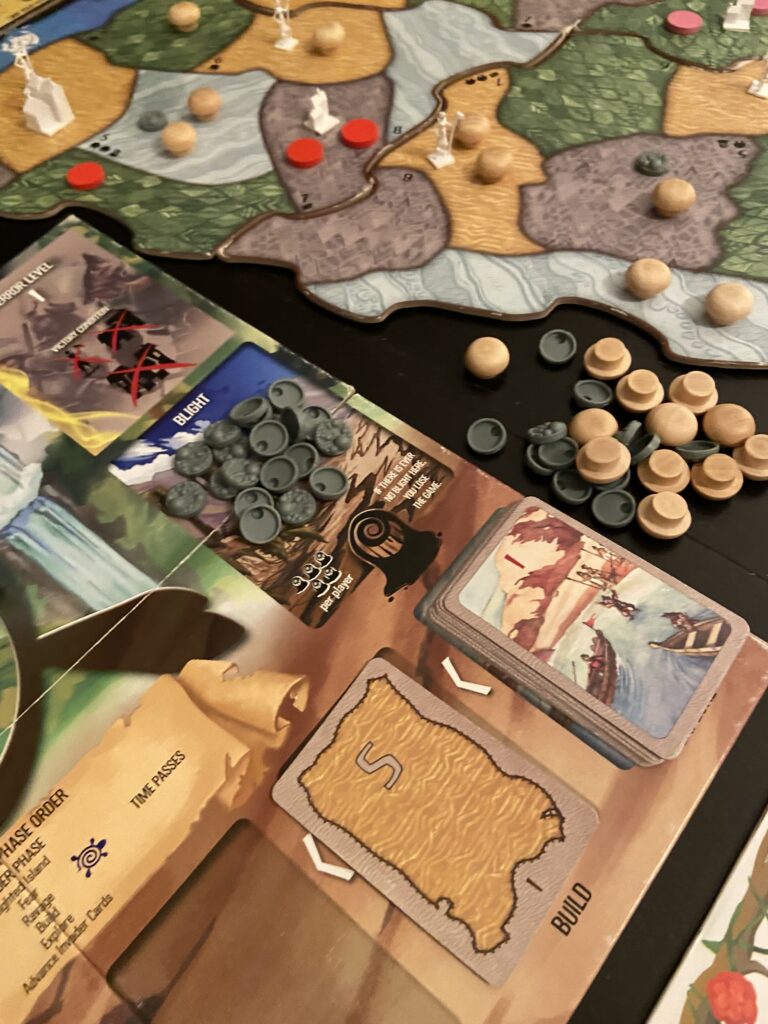This is a series of posts where I play 100 boardgames.

Game: Spirit Island
Designer: R. Eric Reuss
Year: 2017
Country: U.S.A.
Publisher: Greater Than Games
In terms of the ideas it explores, Spirit Island feels like an antidote to games like Settles of Catan. You play as a mighty nature spirit guarding an island inhabited by an indigenous people, working together with your fellow spirits to repel colonizers. You have innate powers and a hand of cards you can play to achieve your ends, often involving the destruction of the cities and towns of the invaders.
A high level of parallel action is one of the distinguishing features of the game. A co-op, the players work together to repel the invaders. You do a lot of your moves simultaneously with other players. The order in which you take actions is more about informing your co-players of your plans than strict game mechanical necessity.
The emotional arc of the game was interesting in that it started off as fairly easy, with simple actions and less sense of threat. But soon the colonizers seemed to be all over the map and the game felt impossible to win, with new rounds bringing in even more invaders until we literally ran out of game pieces.
But at the same time, the powers at our disposal increase, and more unusually, we discover new, easier win conditions. While in the early game, winning required the eradication of all colonizers, later only their major cities needed to be destroyed. This created a wonderful late-game rush where suddenly it felt like our powers combined to sweep the invaders off the island.
Playing as nature spirits seeking to repel colonizers was fun. It was easy to get caught up in the mechanics, cursing how there seemed to be more of them every turn and rejoicing as their cities and towns fell to various disasters. In terms of both emotional and intellectual content, the game felt a step above most boardgames I’ve played. There was something to reflect in the experience after it was over.
In strategic terms, the design has significant complexity that didn’t become apparent until I understood how the game worked. In terms of components and various moving parts it didn’t stand out as particularly difficult. There were a lot of cards and plastic pieces, but other games have way more. It was only when we started to understand how to optimize our moves that we figured out how complicated the calculations involved really were.